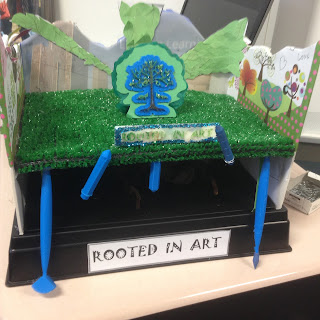This summer, after guiding a hundred students and adults to completing their 3d printing projects of their own, I decided that I should embark on a project of my own. So starting in July, I began a design project in Sketchup. But crippled by fear and insecurity of art, I haven't been able to make much headway. If someone in the class decided to do the same project, I could teach them the tools to execute their designs. If I wanted to do something to show technique, I can get it done quickly. If I wanted to design something based on functionality, I could also do it quickly. But for myself, I just can't seem to get it done. I am not sure why. I think it has something to do with that 7 year old girl thinking she will never be good as her father in art.
I have confidence in my technical ability, but when it comes to the art aspect of 3d design, I just crumble. Which is part of the reason why I always stress painting . I want participants in 3d design to appreciate the artistic aspect of design. Even if I am still grappling with my fear of art (which is very real to some people.),






















